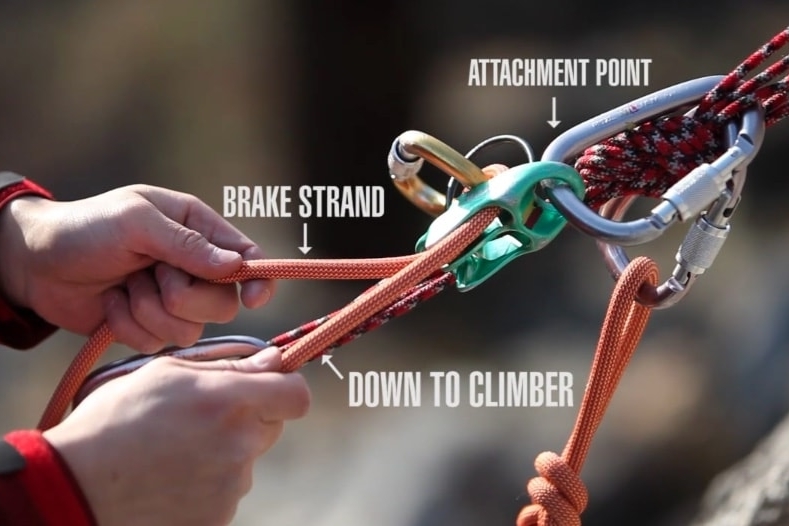Fuuucckkk
I heard Don groan 15 feet below me. I had just led an old-school 5.9 gear line, and Don—a relative neophyte—couldn’t pull the crux moves as he followed the route.
I was belaying from the top of the pitch in guide mode on my trusty ATC Guide. God, what a device! Easily my favorite piece of gear. I love to wax poetic to friends about how brilliant it is, despite how simple it is.
“Want to give it one more go?” I shouted down to Don, whom I couldn’t see below the bulge of which I was atop.
“Sure, what the hell,” he yelled up. Same result. Hanging, stuck. Time to pull out all the stops and see what tricks I had in the bag.
I’ll just haul you up,
I said, thinking it would be a good opportunity for me to practice my 3:1 hauling system. It was only 15 feet to the top, and likely only three or four feet of hauling until he would be through the hard section and could continue climbing himself.
“No, I think it’d be better if you just lower me,” he said.
I started fumbling around with a sling, trying to thread it through the ATC Guide so that I could provide a counterweight by stepping into the other end, thereby releasing the rope from its locked position. After threading the sling, I went about setting up a backup belay on a munter.
What’s going on?
Don asked impatiently, clearly tired after having tried the crux some nine or 10 times. I explained I was in the middle of setting up a munter back up, and he said it wasn’t necessary. We had a couple back and forths about this, and suddenly—don’t ask me why—I started second-guessing myself. Doubt crept into my mind … He seemed super confident that I didn’t need the backup … I decided to forego the minimal work I had left to set up a backup belay and to just release the device from guide mode instead. I stepped into the sling attached to the belay device and eased my weight onto it.
Suddenly, whoosh.
I felt the rope zipping through my brake hand and instantly tightened my grip in an effort to stop it. I also took my foot out of the sling—the ATC returned to guide mode and arrested Don’s fall.
“Whoa … what just happened?” I heard Don say with confusion down below.
“Duude… I’m so sorry,” I said, in disbelief.
I was in shock. How could I have just done that? I knew what would happen, but for some reason let doubt overpower my confidence in my knowledge. Don had luckily only plummeted 10 feet and was still well off the deck, but I just as easily could have killed him if I had reacted slower.
I looked down at my brake hand: white streaks of singed flesh glistened on my finger pads and palm, slippery and smooth to the touch.
What I learned
It’s the most serious climbing mistake I’ve ever made, and it taught me an important lesson.
While it’s important not to be cocky or conceited; while it’s important to listen to other points of view and be open to learning from them; while it’s important to be able to acknowledge when you’re wrong; while all of this is important, it’s also crucial to have confidence in one’s own skills and proficiency.
If you know you’re right, don’t defer to someone because you’re insecure or non-confrontational, don’t let someone bully you. Be confident in what you know. Assert your correctness. (And never lower your partner in guide mode unless you have a back-up rigged.)
Want more climbing content? Get our awesome climbing newsletter, delivered weekly.
Explore more
- Our 30+ most popular articles ever
- Today’s Best Rock Climbing Gear Deals
- 200+ rock climbing videos
- How to Rappel if You Drop Your Belay Device
- Climbing Rope Management During Rappel
- Why You Shouldn’t Use a Daisy Chain for a Personal Anchor
- The Best Way to Belay from Above
- Essay: The Inherent Risks of Climbing
- Story: If You Climb Long Enough
- Best Equipment for Beginner Climbers
- Get daily updates by Liking us on Facebook
- Free rock climbing PDFs on technique, training, knots, and more








